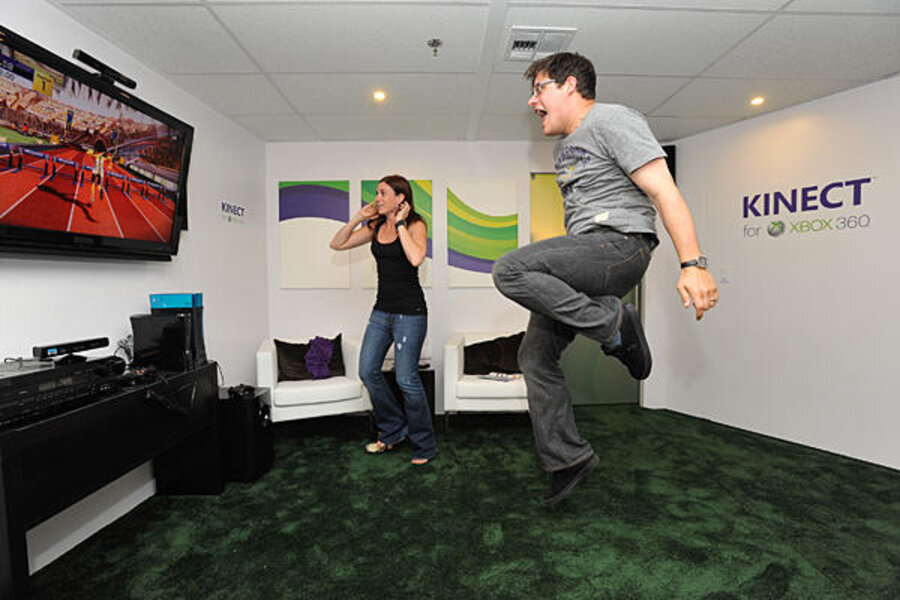Microsoft's vision: What an upgraded Kinect means for consumers
Loading...
Walls with digital interfaces, voice-controlled machinery – that’s the future that Microsoft has envisioned. With the company's latest boost to the Kinect, it may actually be possible.
This week, Microsoft debuted new research into what the Kinect hardware is capable of. The research allows for gesture controls like pinch-to-zoom and swiping as a way to control a PC.
The Kinect was originally released for the Xbox 360, Microsoft’s gaming console. The Kinect, an add-on device, hooks up to the Xbox 360 and allows users to control their Xbox without a controller. This means that people can use gestures and voice commands to control their Xbox experience.
Microsoft soon capitalized on what became the world’s fastest-selling gadget. Do-it-yourselfers quickly began taking advantage of the Kinect, creating code and using the motion-sensor device for much more than controlling video games. The vast array of uses that hackers created for the Kinect led Microsoft to release a Windows software development kit (SDK).
In a video on the Engadget website, Cem Keskin, a researcher at Microsoft Research in Cambridge, England, demonstrates the way the enhanced Kinect works. The Kinect now sees hands as hands, as opposed to seeing them as a single point in space. Technically, the hands are seen in “hand states” meaning they are either opened or closed.
“Since we have these two hand states we can simulate hand grip and therefore, we can inject touch events to drive Windows applications,” says Mr. Keskin in the video.
Keskin goes on to open up the Fresh Paint application. It appears as if he seamlessly connects with the device, allowing him to draw a rather crude house. However, his artwork is not the focus of the video, it is the Kinect’s ability to respond to hand motions accurately and at a timely fashion.
Engadget reports that there is no certainty on just how Microsoft will bring the gesture controller to its audience. Whether it will be a simple SDK, a hardware update, or even the rumored all-new Kinect (to go along with the rumored all-new Xbox).
The Kinect is just a part of how Microsoft sees the future.
“We want to excite customers about the direction we're heading in and show that we are constantly thinking about new scenarios based on trends and real work in Microsoft Research and the business groups,” says Microsoft’s director of strategic prototyping, Jonathan Cluts, in an interview with EWeek. “These scenarios are based on reality, not science fiction.”
So far, this version of the Kinect will only be available for PCs. Microsoft has not announced any plans to bring the gesture controller to its video games.
2013 is turning out to be a big year for gesture controllers. The Leap Motion Controller, due out in May, adds hand gestures to Macs and PCs. Microsoft has not yet released a timeline or launch date for the enhanced Kinect.
For more tech news, follow Aimee on Twitter, @aimee_ortiz
[Editor's note: This article has been changed from its original form to better reflect that this Kinect research is still experimental.]





